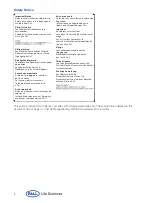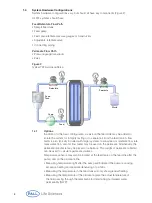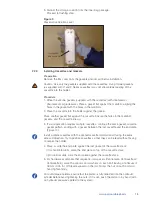
2.1.2
Making a Flushing Gasket
Flushing gaskets (also called SIP/CIP plates) are not supplied with holders, but
flushing gaskets for Centramate and Centrasette holders may be purchased (see
Table 20 in Appendix).
In the generic drawing (Figure 3), the dotted line illustrates where to cut the gasket.
The cut line should bisect the channel holes while providing about 2 cm (0.75 in.) of
space around the outside of the gasket.
Figure 3
Preparing a Flushing Gasket
2.1.3
System Flushing Protocol
1. Fill the feed tank with water.
2. Direct the retentate and permeate lines to drain.
3. Open retentate and permeate valves.
4. Pump the water out through both the retentate and permeate lines to drain.
5. Prepare a sufficient amount of detergent-based solution to fill the system flow path
and add to feed tank. (You should be able to run the system without drawing air
into the pump.)
6. Position both the retentate and permeate lines to return to the feed tank.
7. Adjust the pump to provide an aggressive recirculation flow rate. Use the
recommended CFF for cleaning listed in Table 3. Do not exceed a feed pressure
of 0.34 barg (5 psig). Higher pressures can distort the gasket and cause leaks.
8. Allow the detergent solution to circulate through both the retentate and permeate
lines for 30 to 60 minutes.
9. Drain the system.
10. Wash and then refill feed tank with water.
11. Flush the system thoroughly to drain using deionized water to remove the
detergent solution. If caustic detergent was used, measure the pH of the waste
streams and continue flushing until the pH matches that of the influent.
12. Drain the system and remove the flushing gasket.
13. Install the cassettes.
Silicone Gasket
Channel Hole
Cut Line
Cut out the area
inside the dotted
lines
10











































